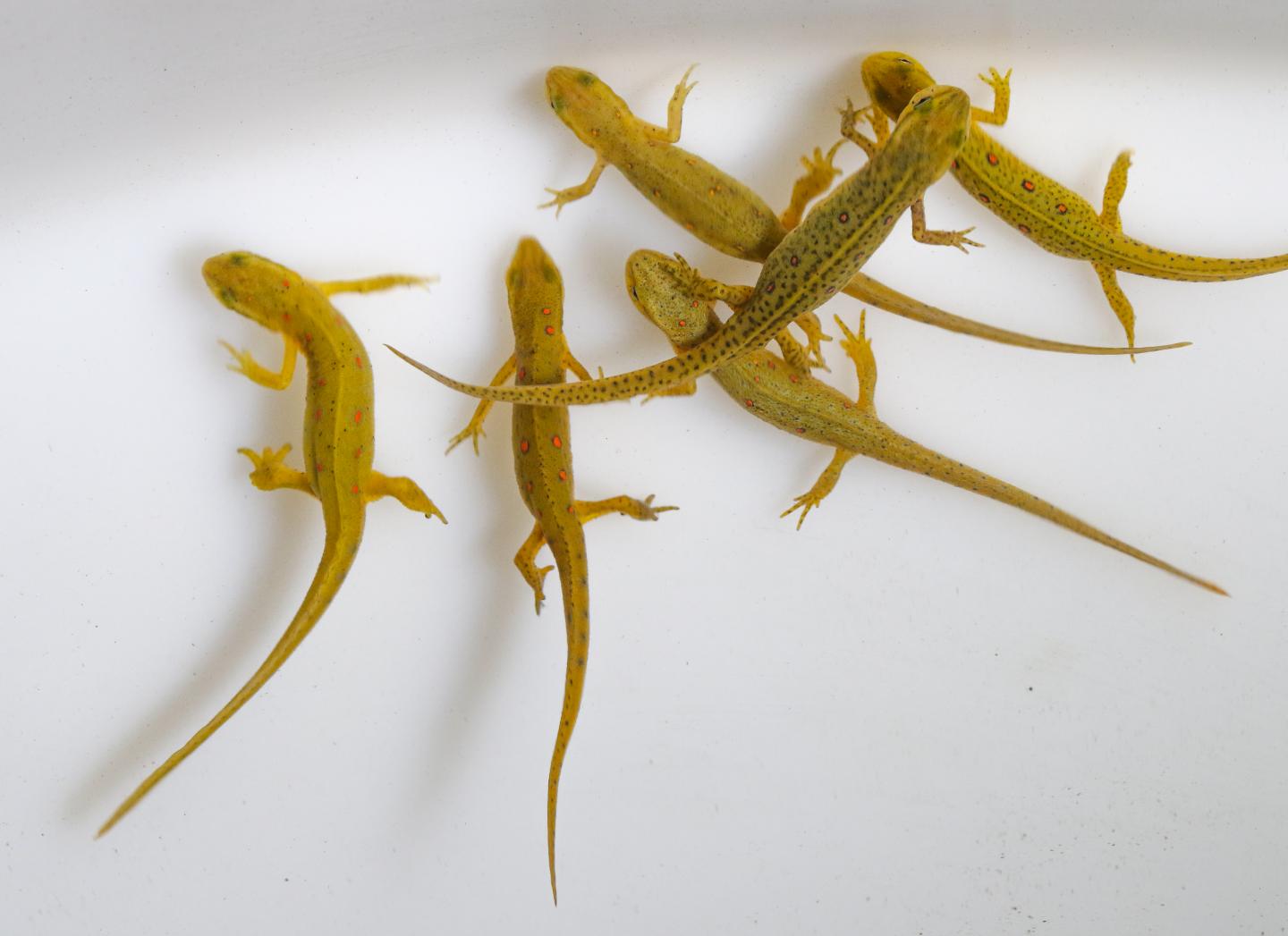Social distancing works for newts, too

Credit: Image by T. Amacker.
KNOXVILLE, Tenn.–Researchers at the University of Tennessee Institute of Agriculture’s Amphibian Disease Laboratory are working to understand–and hopefully get ahead of–highly contagious pathogens affecting amphibians in Europe and Asia. One of the pathogens of interest is Batrachochytrium salamandrivorans, or Bsal.
Managed by Debra Miller and Matt Gray, professors in the Department of Forestry, Wildlife and Fisheries, the Amphibian Disease Laboratory is investigating disease management strategies for if, and possibly, when, Bsal makes its way to the United States through international animal trade or other means. Recent findings by Daniel Malagon, former undergraduate student working in the lab, show promising information for disease management of Bsal.
Using existing data from controlled experiments and computer simulations, Malagon found that host contact rates and habitat structure affect transmission rates of Bsal among eastern newts, a common salamander species found throughout eastern North America. Simply put, the higher the population density of the salamanders, the greater the rate of Bsal transmission. Malagon also found that adding habitat complexity, thereby separating the salamanders from each other, causes transmission rates to drop. These findings are similar to the results being observed when human populations follow the COVID-19 mitigation guidelines seen across the globe today.
Malagon’s academic advisor Matt Gray, who is also the chair of the North American Bsal Task Force, states, “Wildlife and humans pathogens are quite similar. In fact, Daniel’s results support the strategy of social distancing being used to mitigate the COVID-19 outbreaks. By reducing host density in newts or humans, contact rates, and therefore transmission, are reduced. Habitat structure also reduced contact rates of newts, so transmission is curtailed in more complex habitats. This may be analogous to COVID-19 environments. A person may be more likely to become infected in a homogenous movie theater compared to walking through a heterogeneous forest, even if density of people was the same.”
This research will support disease mitigation strategies for amphibians and could provide support for infectious disease recommendations for humans as well. “Our results suggest efficient pathogen spread in populations of highly susceptible salamander species, like the eastern newt. These populations will likely be negatively impacted if Bsal reaches North America. We hope our findings will help inform policy and management strategies to prevent the introduction of Bsal into North America,” added Malagon.
This research is in support of Gray and Miller’s National Science Foundation Project #181450, and the paper with these findings was recently published online by Nature Scientific Reports. Malagon, who is now a doctoral student at Clemson University, was supported in this research by the UT Knoxville College Scholars Program. Co-authors on the paper include Luis Melara of the Department of Mathematics, Shippensburg University; Olivia Prosper, formerly with the Department of Mathematics, University of Kentucky, and now with UT Knoxville; Suzanne Lenhart, Department of Mathematics, UT Knoxville; Jim Fordyce, Department of Ecology and Evolutionary Biology, UT Knoxville; and Davis Carter and Anna Peterson, Center for Wildlife Health, Department of Forestry, Wildlife and Fisheries, UT Institute of Agriculture.
Miller also holds an appointment in the Department of Biomedical and Diagnostic Sciences at the UT College of Veterinary Medicine and is currently serving as the interim director of the UT One Health Initiative. Announced in January, the UT One Health Initiative seeks fundamental answers to issues that address the inextricably linked health of humans, animals, plants and the environment as a whole.
###
Through its land-grant mission of research, teaching and extension, the University of Tennessee Institute of Agriculture touches lives and provides Real. Life. Solutions. utia.tennessee.edu.
Media Contact
Patricia McDaniels
[email protected]
Original Source
https:/
Related Journal Article
http://dx.





